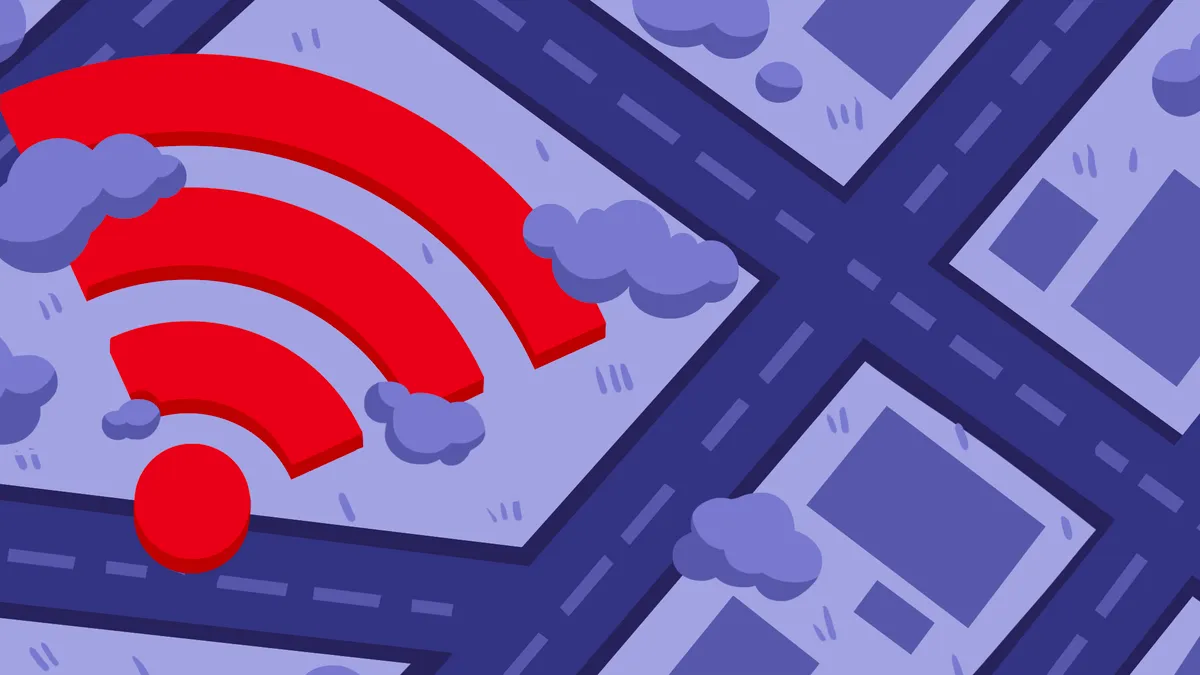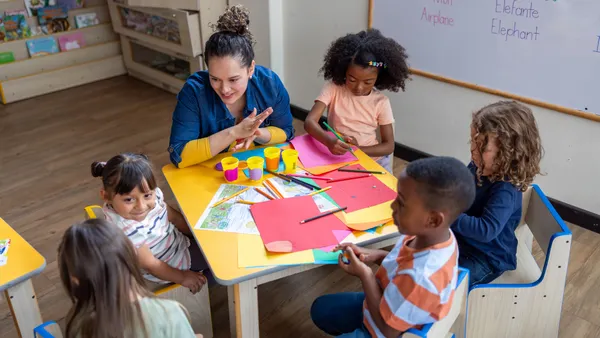This story is the second installment of a four-part series examining the digital divide's impact on K-12. For the rest of the series, click here.
Jason Bell was on his way to Copper Basin High School, tucked in the southeast corner of Tennessee, when he pulled over to the side of the road. His phone was ringing, and he knew there would be no cell service for a stretch of miles ahead.
"That's a daily struggle," Bell, supervisor of secondary instruction for Polk County Schools, said. "There are kids that live in pockets where they have no cell service and no internet service, and we have to adjust as well as we can for those students."
When schools closed as a result of COVID-19 last year, Bell's district was one of many that mobilized to acquire and distribute 1:1 devices and hotspots for students with limited or no access to the internet. But in some places, no number of grants, partnerships, devices or hotspots was enough.
"We're putting Band-Aids on a larger problem for which we can't control the bleeding," Bell said. "But we're trying to slow the bleeding down as much as we can. "
The 'unknown known'
Prior to the pandemic, the digital divide — which encompasses the approximately 29 million U.S. households with school-age children (out of 121 million) that do not have home internet access — was closing at a rate of 1% per year, according to Evan Marwell, CEO and founder of EducationSuperHighway.
The homework gap is a subset of that divide that includes school-aged kids who lack sustainable home access to the internet — and it remains a big question mark.
"It's kind of like an unknown known," said Amina Fazlullah, policy counsel at Common Sense Media, a nonprofit organization advocating to improve students' digital lives.
"Even the numbers we have, we know are not completely accurate," added Lydia Logan, executive director of the Verizon Innovative Learning Schools initiative at Digital Promise, a nonprofit organization working to close the digital divide. "What is often not captured is those who are under-connected," as opposed to completely disconnected.
Prior to the pandemic, there was no available data or political will to understand and solve the problem, Marwell said.
"Whether it was the federal government, state governments or school districts, they all felt like internet access was a choice that families would make," said Marwell.
Since the pandemic forced learning online and internet access became critical to districts' ability to provide a free public education, however, about 10-15 million students have been found to be without reliable home internet, according to Marwell's estimate.
Who those students are is almost entirely correlated with poverty, said Marwell, with over 90% on free and reduced-price lunch. As a result, it's also correlated with race.
The urban and suburban affordability gap
In California's Oakland Unified School District, where 90% of the student population consists of students of color, city CIO Andrew Peterson mapped out the families most in need — those who were unemployed, cited English as a second language or had students on free and reduced-price lunch, among others.
"Typically, the highest percentage of students that need help are also a part of these families who are underemployed," Peterson said. The mapped line cut right through the heart of the city, where Peterson allotted $7.7 million dollars from CARES funding to install public Wi-Fi access points via radios, along street lights, which he used for power.
Before, students may have had to go to the nearest public library, cafe or other public facility. "But what about when it's not safe or you don't own a car?" said Logan. "What about students who lived in places where there might be gang territories and [the facility] might be one side or another?"
"A lot of the urban communities are digitally redlined so even though they're in a place that might have on one block wonderful service, on another block, it might not be that great," Fazlullah said. "Because those parts of the community have not been upgraded by the providers or policy."
Since January 1, when the Oakland initiative went live, the network traffic has doubled every month, with over 40 terabytes of data and over 35,000 unique devices as of April. "Now, maybe you have to sit on the porch," Peterson said. "You don't have to leave home."
"Oakland is not the only place doing this," Marwell said. Places around the nation have mobilized their own efforts — from buses outfitted with hotspots to installing towers atop school buildings to broadcast internet to the community.
Complicating the gap: bandwidth limitations, housing changes
On the other side of the nation, Ryan Shetler bikes from his house in Louisville, Kentucky, to Newburg Middle School, where he is a Verizon Innovative Learning Schools IT lead. Since the onset of the pandemic, his bike route often includes house stops, where he helps troubleshoot device problems, follow up on missing devices or drop off new devices for students.
Newburg was a 1:1 school prior to COVID-19 closures through a Verizon Innovate School grant. But despite having significantly narrowed its own homework gap years prior, not all of Newburg's students had equal access during remote learning.
"During the pandemic, homes looked different," said Nicole Adell, principal of Newburg Middle School. "Some adults had to work, and now your cousin is pretty much like your brother because they're living with you every day."
As a result, Shetler often pitches in, sometimes picking up the slack of other schools, in cases where students are living with three or more siblings or other school-aged children who need access to a 1:1 device or laptop.
In identifying these children, surveys have often been vague, said Logan. "Most surveys will ask, 'Do you or do you not have access to the internet at home?' They're not asking, 'Do you have enough devices and enough bandwidth to do what you need to do?'"
Homes identified as having limited or no access are often supported by districts through grants and partnerships — service providers like Verizon and T-Mobile, as well as firms like Kajeet, are all names that have become familiar over the past year.
The rural infrastructure gap
However, in some places, grants or partnerships supporting hotspots and devices don't cut it. "We can't put a tower up, we can't put fiber," Bell said.
In those places, teachers have worked tirelessly to put together and distribute paper packets regularly, which some have opted to distribute weekly alongside meals. "Packets are terrible," Bell said. "Nobody likes them. It's a lot of extra work on the teachers, and that's not what we're in the business of."
Some have personally delivered packets to students' homes, uploaded instructional content onto devices so students can access it without Wi-Fi, or uploaded instructional videos onto YouTube hoping students can access them with minimal data plans.
Other creative solutions like datacasting have also emerged and been adopted by states or districts over the past year through the use of federal relief funds. The technology sidesteps the need for a cellular network or internet service by using television broadcast signals to distribute information to wireless-enabled devices, like a smartphone, tablet or Chromebook.
However, perhaps with unique geographical and infrastructural hurdles in mind, rural schools were among the first to reopen their doors to students in the 2020-21 and, in some cases, even the 2019-20 school years.
Polk County in Tennessee, for example, has been 100% in-person since Labor Day with the exception of short-term quarantines prompted by positive or suspected cases of COVID-19 in schools.
Even prior to the pandemic, rural districts had advocated for the support needed from their local leaders to build the towers necessary for connection. "Essentially, the solution for rural Americans who have no access is that we need to subsidize building more infrastructure," Marwell said.
'We're trying to fix it, but we're not capable'
Over the past nine months, about 3 million previously disconnected students out of 10-15 million have climbed out of the digital divide, said Marwell, making the rate at which the digital divide has closed during the pandemic at least double the annual 1% it used to be.
However, federal aid or other funds with which purchases or subscriptions were made are, in many cases, drying up.
Newburg's iPads, for example, have a lifecycle of approximately five years, while the school's partnership with Verizon ends this school year. Shetler said Jefferson County Public Schools has stepped in for the upkeep, replacing 25% of the iPads annually.
However, the scarcity of district and school resources means tracking down and trying to recover every missing, lost or broken device in the meantime. One Newburg student ran away to another state, for example, where she left her iPad. "We're not going to get that one back," said Shetler.
"It's not schools' and school districts' job to fix this problem," said Bell, whose Tennessee district is hoping to scrape more funding from future grants to fill in current gaps. "I feel like we're trying to fix it, but we're not capable. We're doing the best we can."
"The reality is school districts don't have the money to pay for this on their own," said Marwell. "[Federal] money is going to run out in 2022, and we're going to face a digital cliff where millions of Americans, who we helped get online, are going to suddenly fall off."
His organization is currently working with the Biden administration, Congress and the Federal Communications Commission, as well as internet service providers, to secure long-term funding and support for data-sharing and collaboration between ISPs and school districts.
"We gave all internet providers a list of addresses of their students and said, 'Who's connected and who's not? And for those who are not, can you serve them?'" Marwell said. "That was a game-changer of an idea, because before, people had relied on surveys and other informal ways of figuring it out."
The federal government, however, has yet to commit to permanent funding. "You can't solve a long-term problem with short-term solutions," Marwell said.

















